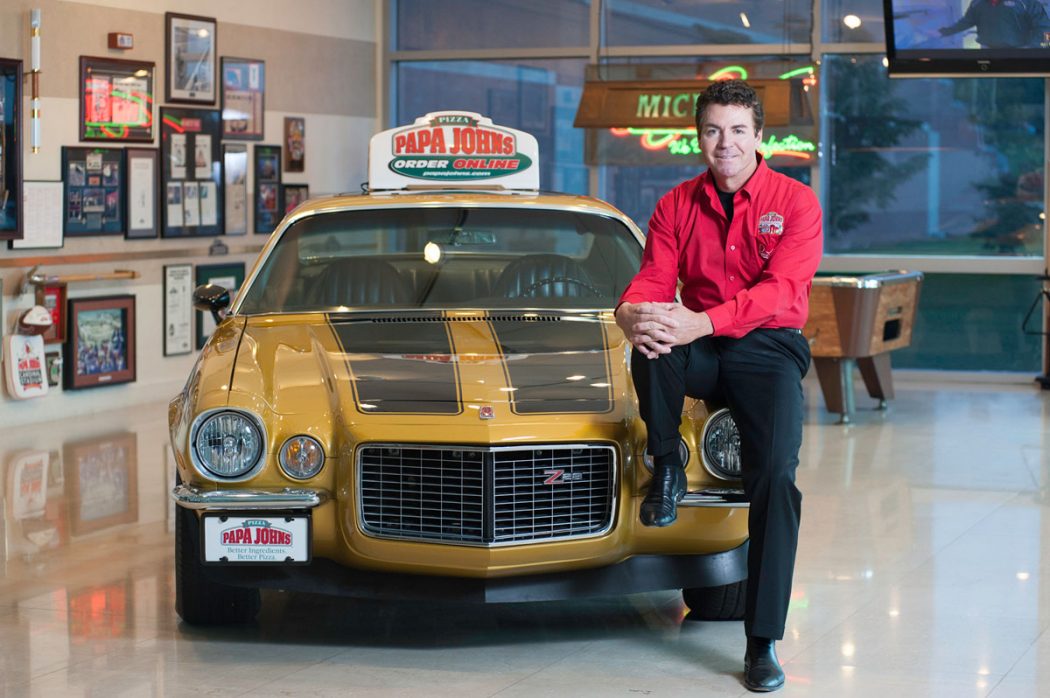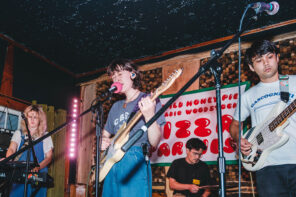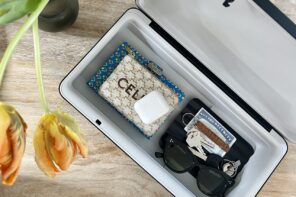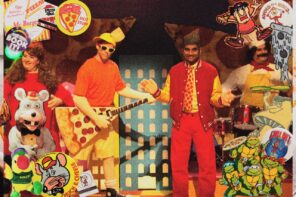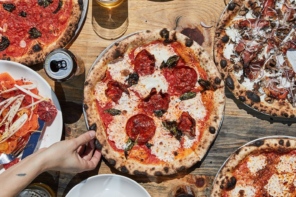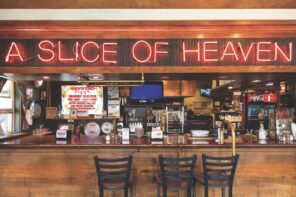This story starts at a bar in Jefferson, Indiana called Mick’s Lounge. The year is 1983 and Mick’s isn’t exactly the type of place you’re going on a homecoming date. There are a few pool tables, dimly-lit lights and a long bar on the back wall filled with a few regulars. A young gentleman by the name of John is the bar manager. He works for his dad, who owns the joint.
John makes $200 a week for his efforts and was working out a deal with his old man to help takeover the place. The 22-year old has ambition, he sees an opportunity to class the bar up a little to drive sales. This would include an idea to clean out the back broom closest of Mick’s and building a place he can start selling something he likes way more than beer—pizza.
In 1984, John sold his only prized possession, a 1971½ Chevy Camaro Z28 for $2,800 to help Mick’s Lounge avoid bankruptcy, took over ownership of the place from his dad, and renovated the broom closest to start selling pizzas out of the back. Thirty-three years later, John turned the broom closet into a $3 billion dollar pizza business. Not bad for a kid from Indiana who before Mick’s was washing dishes.
Whalebone recently had a chance to enjoy a slice with John and talk about life and the things that make it worth living. The following is an interview between Whalebone and the founder of Papa John’s, John Schnatter. No longer John of Mick’s Lounge.
Whalebone: Can you recall what pizza place was your biggest competition in Jefferson, Indiana in 1985?
John Schnatter: In the early days, when we were starting out, about 60 percent of the pizza market belonged to local, independent places. The “big boys” back then remain some of my main competitors today—Pizza Hut, Domino’s and Little Caesar’s, but none were very big yet.
When I opened the first Papa John’s in April of 1985, I knew I wanted to compete at least on a local scale with the other national chains. Within our first week of opening, we were selling around 800 pizzas per week. Compared to our sales from the broom closet, we were a huge success, but I had no idea how I was stacking up against my competition.
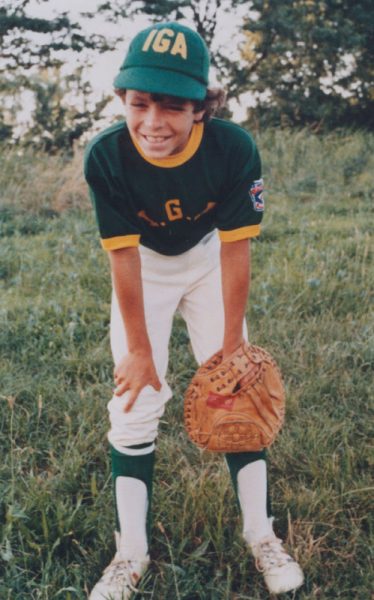
A young Papa John, ready to compete. Photo courtesy of Papa John’s
One day, in early June, I walked over to the local Domino’s and asked the manager what their weekly sales were. I learned we were already selling 50 percent more pizzas than Dominos locally, which had been around for 25 years already. This was proof enough to me that we were on the right track.
WB: Being an entrepreneur is not always Super Bowl commercials and massive successes. Could you share two of the best lessons you’ve learned along the way that you would tell others that are investing in themselves to have a go at it?
JS: The very first Papa John’s was built under the assumption that we would be doing about half and half dine-in and delivery and carryout. Our first Papa John’s even had a full dining room with fancy silverware and china, and other menu items like fried zucchini and mozzarella sticks—even beer.
However, by the mid-to-late 1980s, we realized the pizza business was moving more toward delivery and carry-out than in-house dinning. Customers wanted fresh, hot pizza to come to them—not the other way around. We made a crucial decision back then to abandon our original business plan and focus on the delivery model to accommodate what the customer wanted. I realized then that it’s pretty simple: The customer is always right and if you ignore what the customer wants, you will lose their business.
I realized then that it’s pretty simple: The customer is always right and if you ignore what the customer wants, you will lose their business.
Another of my favorite lessons—that really speaks to my entrepreneurial spirit—is that you have to “hunt where the ducks are.” This plus a scrappy business mindset can lead to great success. Let me explain. When we were building our business, we realized that we had to find the people who liked to eat pizzas and wanted them delivered. Every night, after I wrapped things up at Mick’s Lounge—between 1 and 3AM—I would head down to the local Domino’s, walk over to the dumpster and fish out the deli slips that had customers’ names, addresses and orders on it. I then sent them a letter saying, “To the pizza lover who this concerns. Papa John’s makes better pizzas. We’ll give you half off on your first order. Give us a try.” It finished with our first phone number and my personal signature. Not exactly glamorous, but it was effective. To be a successful entrepreneur, you have to think outside of the box. In the beginning, we were a scrappy little company willing to do everything we could to boost our brand, including dumpster diving.
WB: It is reported that there are over 4,500 current locations of Papa John’s stores across the US and Canada. When can we expect the first Papa John’s drive thru window for a slice?
JS: We recently opened our 5,000th store location—a very proud moment for the Papa John’s pizza family. Over the past 30 or so years, we have had many firsts ahead of our national pizza chain competitors, like offering digital ordering at all of our restaurants, getting rid of artificial ingredients across our food menu and providing customers with unique specialty pizzas like Bacon Cheeseburger and Philly Cheesesteak.
As I said earlier, we have shifted our business plan before based on consumer preferences. We strive to making our customers’ lives easier, and the customer is always right. If a Papa John’s drive thru is the direction of the future then we are open to it. But for right now, I think we will stick to what we know, delivering better ingredients and better pizza right to your door.
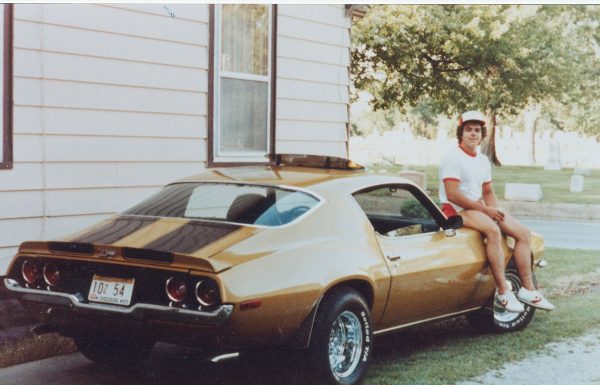
John and his prized 1971 Chevy Camaro. Photo courtesy of Papa John’s
WB: Let’s pretend that Papa John’s, the business, goes away tomorrow, erased from the history of the world. At the same time, we hand you a fistful of cash to take your family out for dinner…but it has to be pizza. What pizza place would you guys chose for dinner tonight—anywhere in the world?
JS: Let’s hope that doesn’t happen! I have been very fortunate in my success with pizza, and what I love about pizza is that it brings people together and is universally enjoyed. My life’s work is pizza. I am and will always be a pizza maker. This is a tough one. So, if there ever came a day when I couldn’t order Papa John’s for my family, I would make them a pizza at home…with hand-tossed pizza dough, fresh-packed sauce, pepperoni, sausage, a six-cheese blend and Italian seasoning.
WB: Your story would make a near perfect Hollywood movie about the makings of the american dream. We’re incredibly inspired by your vision and approach. Let’s say we’re able to pull some strings and have any actor in the world play for you the main role. Who you going with?
JS: It’s funny you ask that, because when we first started doing commercials that featured me in them, in the late 1990s and early to mid 2000s, a lot of viewers actually thought I was a paid actor. Even to this day, some people don’t realize that I am the CEO of Papa John’s and think I am simply an actor.
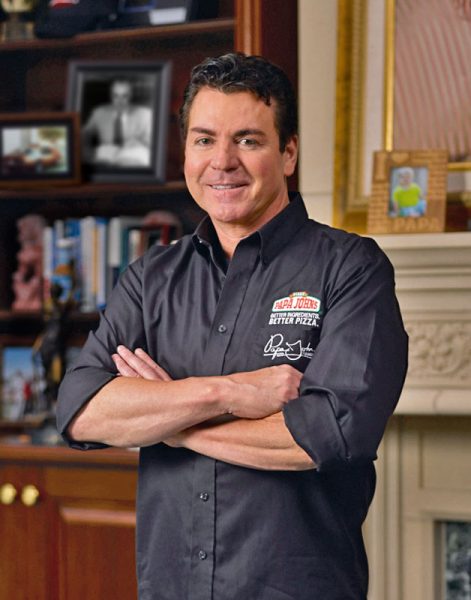
John, looking proper. Photo courtesy of Papa John’s
But, if I had to choose, I would want someone relatively unknown to play me to stay true to my humble beginnings.
WB: Was there a slogan or marketing campaign, way back in the day, before “Better Ingredients. Better Pizza.” for Papa John’s?
JS: It actually took us a few slogans to get to “Better Ingredients. Better Pizza.” Our first slogan was “Homemade Pizza the Way You Like It,” which we started using when we were in the broom closet (the location of the first ever Papa John’s in Mick’s Lounge). After that we switched to “Fine People Serving Great Pizza,” shortly after we moved into the first official Papa John’s in 1985. But then we replaced it with “Made from Scratch with the Finest Ingredients” only a few months later in December 1985. We simultaneously trademarked “Delivering the Perfect Pizza,” which we used once or twice in 1986. Then we started using it exclusively in 1989. It was our slogan up until we finally came up with “Better Ingredients. Better Pizza.” in the mid-1990s, which we’ve been using ever since. It became our official slogan in 1996, almost a decade after Papa John’s started.
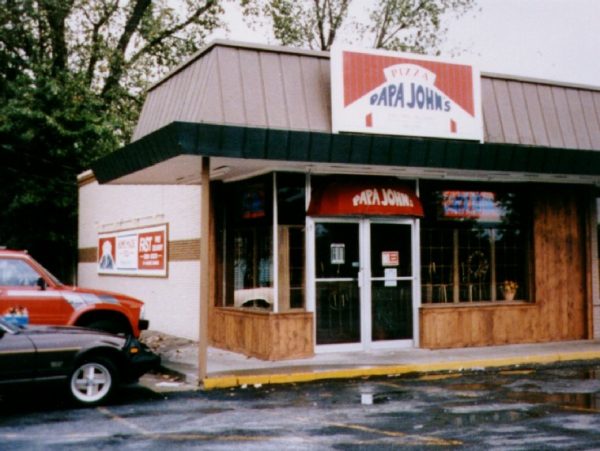
One of the first Papa John’s locations, up and running. Photo courtesy of Papa John’s
WB: According a foodservice analysis at Mintel, the trend towards vegetarian and vegan diets has grown to almost 66% of restaurants catering to this audience with specific menu items. Do you think Papa John’s would entertain the idea of introducing an all vegan pizza?
JS: Over the years, we have taken a lot of steps to bring our customers the best quality ingredients and focus on improvements they want. For example, our Clean Label journey. We always prioritized our better ingredients and making ingredient changes that stayed consistent with that commitment, but when our customers started talking more about “cleaner” eating, we listened and began to invest even more, over $100 million dollars annually, on making those ingredient transitions happen.
And we actually already offer a vegan pizza, if that’s what our customers want. Our dough is made of 7 simple ingredients that are vegan-friendly, and our fresh-packed pizza sauce and sliced veggies give our customers the choice of creating a personalized vegan pizza for delivery at any time.
We are aware of these ingredient trend and changes, and want to be the national pizza brand of choice for consumers no matter what they like on their pizza. We have made some great accomplishments, but we aren’t done yet. We have some exciting ingredient announcements in the pipeline that we are excited to talk about in the next couple of months or so—stay tuned!
WB: What’s the best, and the worst, decision you have ever made as a business owner?
JS: The best decision was probably staying true to who we are in the pizza delivery business, even through our international expansion. My original goal was to run Papa John’s like an independent, mom-‘n’-pop pizzeria. This has always been important to me, ever since I came up with the idea for Papa John’s in college. If we come up with an idea that doesn’t somehow give us better ingredients and a better pizza, it’s not an idea worth listening to or acting on. I never wanted to cut corners or use poor quality ingredients for quick results.
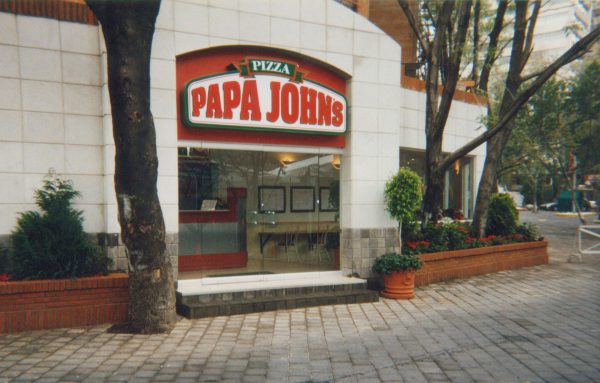
The first international Papa John’s location in Mexico City. Photo courtesy of Papa John’s
One of my more poorer decisions probably includes when I first took over Mick’s Lounge. I knew nothing about running a business, and, to bring my father out of debt, I restructured the pricing to get customers in the door. A local lunch joint came over to see what we were doing to steal his lunch customers and questioned that pricing structure by asking how much it cost me to make the meal. When I sat down, I realized it was costing more to make the product than what I was selling it for, so while I had more people in the door than before I was losing money! It was a great lesson for me moving forward and helped to establish my pricing system for my pizza.
You can’t be an entrepreneur and not make mistakes. You must make mistakes, tinker and go through trial and error to be successful.
WB: We think there are a couple of things that naturally go with pizza. What items, not on the Papa John’s menu, would you say are the best with pizza? For example, we see you do not have Tabasco or beer on the menu.
JS: Back when I took over managing my father’s tavern, Mick’s Lounge, and where I built the first Papa John’s in a knocked-out broom closet, we served beer! We would hold euchre tournaments on Thursday nights and serve a special on the beer. You could get a $1 dollar lunch special that consisted of a beer and Mick Burger.
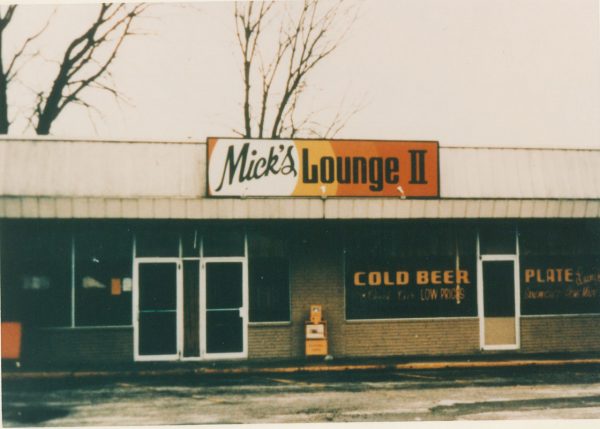
The original Mick’s Lounge, where it all started. Photo courtesy of Papa John’s
When I started planning the first Papa John’s, I figured we could sell $5 pizzas in the back of the bar and 50-cent beers in the front. Eventually, I would shift everything away from the bar business to the pizza business. I found the pizza business to be more lucrative and it was what I loved! It’s fun to see what our customers pair their favorite pie with a good, refreshing beer or making it spicy with their favorite hot sauce.
WB: If you happened to be in a store one day and decided to give the delivery person a break, what song would you want playing in the car on the way to deliver the pizza?
JS: I think we had a couple of commercials in the 2000s put to “Go Big Papa” by Big Papa and the TCB. I’m sure that’s what people would expect to hear coming from the speakers of my gold Camaro as I delivered pizza. Goes with the name I guess.
WB: Could you share one or two initiatives that you are proud to say you have been able to be involved with and give back to communities from the success and growth of Papa John’s?
JS: One thing I really enjoy is contributing to the next generation of entrepreneurs through hosting talks and the three Free Enterprise centers—The John H. Schnatter Institute for Entrepreneurship and Free Enterprise at Ball State University, The John H. Schnatter Center for Free Enterprise at the University of Louisville and The John H. Schnatter Institute for the Study of Free Enterprise at the University of Kentucky. Investing in the next generation is crucial, as entrepreneurship is the engine for a strong economy. I recently wrote a book, Papa: The Story of Papa John’s Pizza, and I hope that my success and story can inspire other young dreamers to pursue their own passions. Pizza was and is mine.
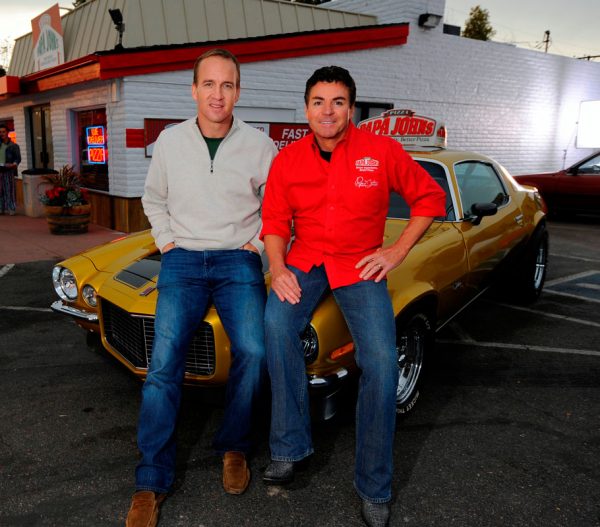
John and some guy by the name of Peyton Manning. Photo courtesy of Papa John’s
With the growth of Papa John’s we’ve been able to support and give back to a lot of great organizations in the local communities we serve. Another rewarding venture for me was teaming up with Peyton Manning to help build the St. Vincent House, a place where families with a child battling an illness or injury at the Peyton Manning Children’s Hospital can be together and focus on what matters most—getting well.
Article as featured in Whalebone Magazine’s Pizza Issue, out now.

